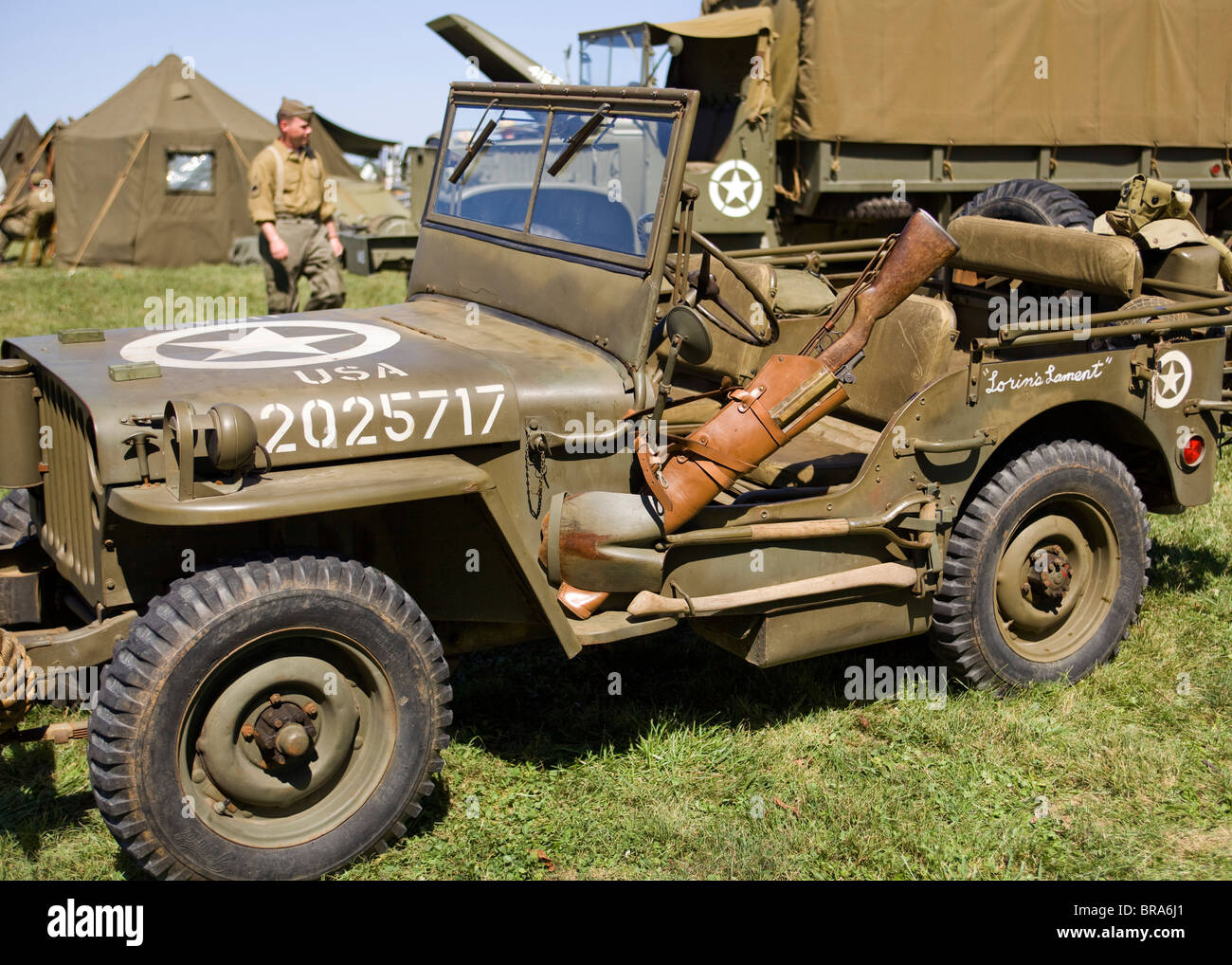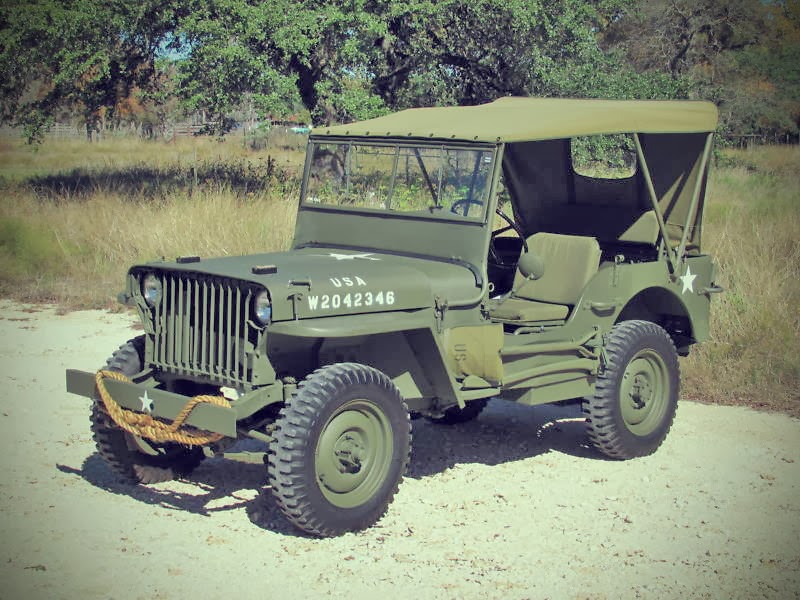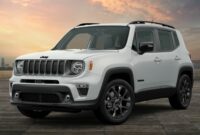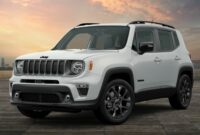Willys Army Jeep For Sale: A Comprehensive Guide to Owning a Piece of History sale.truckstrend.com
Introduction: The Unyielding Spirit of the Willys Army Jeep
Few vehicles command the same level of respect, admiration, and nostalgia as the Willys Army Jeep. More than just a mode of transport, the Willys Jeep, particularly the iconic MB and its Ford counterpart GPW, is a rolling testament to ingenuity, resilience, and a pivotal era in human history. Born out of necessity during World War II, this nimble, go-anywhere vehicle became the backbone of Allied forces, earning the moniker "the vehicle that won the war." Its rugged simplicity, robust construction, and unparalleled utility cemented its place not just in military lore but in the hearts of automotive enthusiasts worldwide.
Willys Army Jeep For Sale: A Comprehensive Guide to Owning a Piece of History
Today, the phrase "Willys Army Jeep for sale" evokes a strong response, signaling an opportunity to acquire a tangible piece of that storied past. Whether you’re a history buff, a collector, an off-road adventurer, or simply someone who appreciates classic machinery, owning a Willys Army Jeep is a unique experience. This comprehensive guide will delve into everything you need to know about finding, evaluating, purchasing, and even maintaining your very own piece of military history, ensuring your journey from search to ownership is as smooth and rewarding as possible.
The Enduring Legacy of the Willys Jeep
The story of the Willys Jeep began in 1940, when the U.S. Army sought a lightweight reconnaissance vehicle. Willys-Overland, along with Bantam Car Company and Ford Motor Company, submitted prototypes. The Willys MB, with its powerful "Go-Devil" engine, ultimately won the contract, though Ford was also commissioned to produce an identical version, the GPW, to meet the immense demand. Over 600,000 Jeeps were produced during WWII, serving on every front, performing every conceivable task, from carrying troops and supplies to serving as mobile command posts and even ambulances.
Post-war, the Jeep transitioned into civilian life as the CJ (Civilian Jeep), but the military variants continued to evolve with models like the M38 and M38A1 for the Korean War and beyond. The enduring popularity of the "Army Jeep" stems from its historical significance, its mechanical simplicity (making it relatively easy to maintain for the DIY enthusiast), and its timeless, utilitarian design. Owning one isn’t just about driving; it’s about connecting with a powerful narrative of strength, freedom, and American spirit.
What to Look For When Buying a Willys Army Jeep
Purchasing a vintage military vehicle requires careful consideration. Unlike modern cars, the age and intended use of a Willys Jeep mean specific areas demand thorough inspection.
Authenticity vs. Restoration
- Originality: True collectors often seek out highly original, unrestored examples, though these are rare and command premium prices. Look for original data plates (on the firewall and glovebox), matching serial numbers (VINs), and period-correct components.
- Restoration Quality: Many Jeeps for sale will be restored. Evaluate the quality of the restoration. Was it a meticulous frame-off restoration using correct parts, or a quick cosmetic refresh? Poorly done bodywork can hide significant rust.

Condition Categories
Willys Jeeps generally fall into three categories:
- Project Jeeps: These require significant work, often lacking an engine, transmission, or having extensive rust. They are the cheapest but demand the most time, skill, and financial investment. Ideal for those seeking a long-term restoration project.
- Running & Driving (Driver Quality): These are operational but may have cosmetic flaws, minor mechanical issues, or not be historically accurate. They offer immediate enjoyment but may require ongoing work. A good entry point for enthusiasts.
- Restored/Show Quality: These have undergone professional, often frame-off, restorations to original military specifications. They are ready for shows, parades, and light driving. They command the highest prices.

Key Components to Inspect
- Chassis/Frame: The backbone of the Jeep. Look for cracks, bends, and especially rust, particularly where the frame rails meet the cross members.
- Body: Rust is the primary enemy. Check the hat channels under the floorboards, the toolboxes, the battery tray, the fenders, and the inner wheel wells. Original sheet metal is preferred over reproduction, though good reproductions exist.
- Engine: The "Go-Devil" L-head four-cylinder (MB/GPW/M38) or "Hurricane" F-head four-cylinder (M38A1) are robust. Check for oil leaks, smoke from the exhaust (blue for oil, white for coolant, black for rich fuel mix), and listen for knocks or unusual noises. Ensure proper compression.
- Drivetrain: Inspect the transmission (T-84 for MB/GPW, T-90 for M38/M38A1) and transfer case (Dana 18). Check for fluid leaks, ease of shifting, and engagement of 4×4. The axles (Dana 25 front, Dana 27/44 rear depending on model) should be checked for leaks and proper gear engagement.
- Brakes: These are manual drum brakes. Ensure they operate effectively and evenly. Check for fluid leaks at the master cylinder and wheel cylinders.
- Steering: Look for excessive play in the steering wheel, which could indicate worn tie rod ends, kingpins, or a loose steering box.
- Electrical System: MB/GPW are 6-volt, M38/M38A1 are 24-volt. Check the wiring for brittleness, splices, and overall condition. Ensure all lights and gauges function.
- Tires: Military NDT (Non-Directional Tread) tires are historically correct but can be expensive. Check for cracks, age, and tread depth.
Types and Models of Willys Army Jeeps You Might Find
While "Willys Army Jeep" often refers generically to the WWII era, several distinct military models exist:
- Willys MB (1941-1945): The original G.I. workhorse. Early models had a "slat grill" (nine horizontal slots), while later, more common ones featured the iconic stamped steel grille with seven vertical slots. Distinguished by its flat-fender design and 6-volt electrical system.
- Ford GPW (1941-1945): Ford’s identical version of the MB, produced under license. Many parts are interchangeable, but Ford often stamped its "F" script on components.
- Willys M38 (1950-1952): The Korean War-era successor to the MB, based on the CJ-3A. Features a 24-volt waterproof electrical system, larger headlights, a deeper body, and a hinged windshield.
- Willys M38A1 (1952-1971): The first "round-fender" military Jeep, based on the CJ-5. It featured the more powerful F-head "Hurricane" engine, a longer wheelbase, and a more comfortable ride. Many were used well into the Vietnam War era.
It’s crucial to differentiate these from the civilian CJ models, which, while sharing DNA, often lack the military-specific features and historical provenance that collectors seek in an "Army Jeep."
Where to Find a Willys Army Jeep For Sale
The search for a Willys Army Jeep can be an adventure in itself. Here are the most common avenues:
- Online Marketplaces:
- eBay Motors: A wide variety, from projects to fully restored. Be wary of listings without detailed photos or specific descriptions.
- Craigslist/Facebook Marketplace: Often where private sellers list vehicles. You might find a local gem, but exercise caution with scams.
- Specialized Forums & Facebook Groups: Groups dedicated to Willys Jeeps, military vehicles, or vintage 4x4s are excellent resources. Members often sell their own vehicles, and you can tap into collective knowledge. Examples: G503.com (military vehicle forum).
- Specialty Dealers & Restorers: There are businesses dedicated to buying, restoring, and selling vintage military vehicles. They often offer higher-quality, documented vehicles, but at a premium. They can also source specific models for you.
- Auctions:
- Classic Car Auctions (e.g., Mecum, Barrett-Jackson): High-end, restored examples often appear here.
- Government Surplus Auctions: Less common now for intact running vehicles, but parts or "demilitarized" projects occasionally surface.
- Local Estate/Farm Auctions: Sometimes, a barn find surfaces at a general auction.
- Word of Mouth & Car Shows: Attending military vehicle shows, swap meets, and classic car events is a great way to network, see vehicles in person, and potentially find a seller.
The Buying Process: Tips and Challenges
Once you’ve found a potential candidate, the real work begins.
Setting a Budget
Beyond the purchase price, consider:
- Restoration Costs: If buying a project, budget significantly for parts, bodywork, paint, and mechanical repairs. This can easily exceed the purchase price.
- Parts: While many parts are reproduced, some original or NOS (New Old Stock) components can be expensive.
- Transportation: Factor in shipping costs if the Jeep isn’t local.
- Insurance & Registration: Vintage vehicle insurance is typically affordable, but ensure you can legally register it in your state/country.
Due Diligence
- Vehicle History: Ask for any available documentation – original manuals, maintenance records, previous titles, photos of restoration.
- Paperwork: Ensure the seller has a clear, transferable title. Military vehicles sometimes lack standard titles, requiring a bill of sale and a process to obtain a new title in your state. Understand your local DMV requirements before buying.
- Test Drive: If possible, drive the Jeep. Listen for unusual noises, check brake effectiveness, feel for steering play, and test all gears (including 4×4). Remember, these are slow vehicles with rudimentary handling compared to modern cars.
- Professional Inspection: For a significant investment, hire a mechanic experienced with vintage vehicles or a specialist in military Jeeps to perform a pre-purchase inspection. This can uncover hidden issues.
Negotiation
Be prepared to negotiate. Research comparable sales to understand market value. Don’t be afraid to walk away if the price is too high or if the vehicle has too many undisclosed issues.
Common Pitfalls
- Hidden Rust: What looks like surface rust can be a deep structural problem. Bring a magnet to check for bondo.
- "Frankenstein" Builds: Jeeps pieced together from various models or civilian parts can be problematic for authenticity and future repairs.
- Missing or Incorrect Parts: Verify that key components (e.g., correct engine, axles) are present and appropriate for the model.
- Title Issues: Ensure a clear chain of ownership. Avoid vehicles with no title unless you are fully aware of and prepared for the legal process to obtain one.
Owning and Maintaining Your Willys Army Jeep
Owning a Willys Army Jeep is a commitment, but a rewarding one.
Parts Availability
One of the great advantages of Willys Jeeps is the robust aftermarket. Many parts are reproduced, and original components can be found through specialized dealers, swap meets, and online forums.
Community Support
The Willys Jeep community is incredibly active and supportive. Online forums, local clubs, and national organizations offer a wealth of knowledge, advice, and camaraderie.
Maintenance Tips
Willys Jeeps are mechanically simple, making them accessible for the average DIY enthusiast.
- Regular Fluid Checks: Oil, transmission fluid, transfer case fluid, differential fluid, brake fluid.
- Greasing: Regular greasing of kingpins, U-joints, and other chassis points is crucial.
- Ignition System: Keep points, condenser, spark plugs, and wires in good condition.
- Cooling System: Ensure the radiator is clean and the thermostat and water pump are functioning.
- Rust Prevention: Keep it clean and dry, especially after off-road excursions. Consider rust-proofing treatments.
The Driving Experience
Be realistic. A Willys Army Jeep is not a modern SUV. It’s slow, loud, lacks power steering, power brakes, and often heat. It’s a raw, visceral experience that connects you directly to the road and the machine. It’s about the journey, not the speed.
Investment Potential
Well-maintained, original, or expertly restored Willys Army Jeeps tend to hold their value and can appreciate over time, especially rare models or those with documented combat history.
Willys Army Jeep For Sale: Estimated Price Guide
This table provides a general estimate and can vary significantly based on specific model, originality, documentation, and seller.
| Model | Condition: Project (Needs Significant Work) | Condition: Running/Driver Quality (Operational, Minor Issues) | Condition: Restored/Show Quality (Excellent, Accurate) | Key Considerations/Notes |
|---|---|---|---|---|
| Willys MB | $5,000 – $15,000 | $15,000 – $30,000 | $30,000 – $60,000+ | The iconic WWII Jeep. "Slat Grills" are rarer and command higher prices. Authenticity and original components highly valued. |
| Ford GPW | $5,000 – $15,000 | $15,000 – $30,000 | $30,000 – $60,000+ | Ford’s version of the MB. "F" script parts increase value for collectors. Pricing similar to MB. |
| Willys M38 | $4,000 – $12,000 | $10,000 – $20,000 | $20,000 – $40,000 | Korean War era. 24V system, waterproof ignition. A good entry point for military Jeep ownership. |
| Willys M38A1 | $3,000 – $10,000 | $8,000 – $18,000 | $18,000 – $35,000 | First "round-fender" military Jeep. F-head engine. Often more comfortable than flat-fender models. |
Note: Prices can fluctuate based on market demand, location, and the specific historical significance of an individual vehicle.
Frequently Asked Questions (FAQ)
Q1: How much does a Willys Army Jeep cost?
A1: As shown in the table above, prices vary widely based on the model and condition. A project Jeep can start from $3,000-$5,000, while a fully restored, show-quality WWII MB or GPW can exceed $60,000.
Q2: Are parts still available for Willys Jeeps?
A2: Yes, absolutely! Thanks to a strong enthusiast community and numerous specialized vendors, many original and high-quality reproduction parts are readily available for all military Willys Jeep models.
Q3: Is it difficult to drive a Willys Jeep?
A3: Compared to a modern vehicle, yes. Willys Jeeps lack power steering, power brakes, and synchronized transmissions (especially the T-84 in MB/GPW, requiring double-clutching for downshifts). They are slow, loud, and have a stiff ride. However, with practice, they are manageable and provide a very engaging, raw driving experience.
Q4: Can I register a military Jeep for street use?
A4: In most places, yes. The process depends on your local Department of Motor Vehicles (DMV) or equivalent. You will typically need a bill of sale and, ideally, a clear title. Some states may require a VIN verification or a special process for older vehicles without traditional titles. Research your local requirements thoroughly before purchase.
Q5: What’s the difference between a Willys MB and a Ford GPW?
A5: Superficially, they are almost identical. Both were built to the same U.S. Army specifications. The main difference lies in the manufacturer’s markings: Ford GPWs often have an "F" script stamped on many components (nuts, bolts, body parts), while Willys MBs have "W" or no specific manufacturer mark. Originality often dictates a collector’s preference.
Q6: Should I buy a restored or a project Jeep?
A6: This depends on your budget, mechanical skills, and time commitment. A restored Jeep offers immediate gratification but costs more upfront. A project Jeep is cheaper to buy but requires significant time, money, and skill for restoration. Many enthusiasts enjoy the process of restoring a project themselves.
Conclusion: Driving History Forward
The Willys Army Jeep is more than just a classic vehicle; it’s a symbol of a bygone era, a testament to enduring design, and a gateway to a vibrant community of enthusiasts. Whether you envision yourself meticulously restoring a forgotten relic, proudly parading a show-stopping masterpiece, or simply enjoying the rugged simplicity of a driver-quality classic, the journey of owning a Willys Army Jeep is deeply rewarding.
Embarking on the search for a "Willys Army Jeep for sale" is the first step in becoming a custodian of history. With careful research, a keen eye for detail, and a clear understanding of your goals, you can navigate the market successfully and soon find yourself behind the wheel of one of the most iconic and beloved vehicles ever built. It’s an investment not just in metal and rubber, but in a legacy that continues to inspire.




